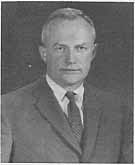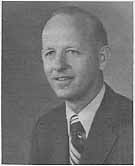
Hon. Stanley R. Resor
Secretary of the Army
July 1965 - July 1971
Department of the Army Historical Summary: FY 1971
I.
Introduction
During fiscal year 1971, with combat operations in Vietnam drastically reduced, American casualties at their lowest in five years, Vietnamization moving ahead, a large-scale troop redeployment in progress, and over-all strength declining to peacetime levels, the dimensions of a new Army challenge began to emerge. How could the Army, on the heels of an unpopular war, in the face of antimilitary sentiment and social ferment, with reduced strength and appropriations, and without resort to the draft, maintain a strong, viable, and professional ground force to meet its current and future roles and missions?
The changing conditions and prospects were evidenced in many ways. A key factor was the gradual and appreciable withdrawal from a combat to a holding and support role in Vietnam coincident with the redeployment of large numbers of troops and units from the war zone.
Battle casualties also decreased markedly from the preceding year's levels: 2,135 soldiers were killed and 15,488 wounded in the twelve-month period, compared with 4,672 and 34,826 respectively in 1970. More than half the wounded—7,789—were returned to duty without requiring hospitalization. Total Army battle casualties of the war—January 1, 1961, to June 30, 1971—were 30,173 killed and 199,142 wounded. Another 275 men were missing in action as the year closed, 62 of whom were known to have been captured.
U.S. Army major unit strength in Vietnam was reduced during the year by 3 2/3 division force equivalents, leaving only 2 1/3 equivalents at year's end, a reduction of 6 division forces from the wartime peak. By June 30, 1971, less than 200,000 American soldiers remained in Vietnam, about 162,000 below the wartime high.
Over-all U.S. Army strength dropped correspondingly, from the wartime peak of 1,570,000 reached in June 1968 to the 1,124,000 level of June 30, 1971—a total reduction of about 446,000 over the three-year period.
In the coming year the Army will continue to redeploy forces from Vietnam, reduce over-all strength, redistribute equipment and personnel, meet commitments elsewhere in the world, and maintain authorized strength while moving toward a zero draft. The transition to a volunteer force naturally raised problems and absorbed an increasing amount of attention during the past year.
Many considerations are involved in the concept of an all-volunteer
3
 |
Hon. Stanley R. Resor |
U.S. Army and in America's ability and inclination to sustain one. The statesmen who framed the constitution propounded a democratic philosophy against large standing armies in peacetime and set the directions of a military policy under which the citizen soldier would be called to the colors in times of emergency to fight the nation's wars. The principle served well enough until the middle of the twentieth century, when the United States, emerging from World War II as a major world power, could no longer demobilize and return to a small professional Army. Adequate preparedness now required peacetime military forces at levels above citizen inclinations for voluntary service, and in 1948 the nation turned to peacetime conscription.
As the United States moves into the eighth decade of the century, more than half of its citizens are under thirty years of age and view the draft, operative throughout their lifetime, as a normal state of affairs. Yet limited call-ups and highly selective eligibility and deferment, along with the heavy involvement of draftees in the Vietnam War and the traditional discontent of a free people with compulsory military service (especially in peacetime or under conditions of limited or undeclared war), brought the draft into question and inspired broad official and private interest in developing a more acceptable procedure.
Thus on March 27, 1969, the President of the United States created the Commission on an All-Volunteer Armed Force, chaired by former Secretary of Defense Thomas S. Gates, Jr., to "develop a comprehensive plan for eliminating conscription and moving toward an all-volunteer armed force." In its report of February 20, 1970, the commission agreed unanimously "that the nation's interests will be better
4
|
Hon. Robert F. Froehlke |

|
served by an all-volunteer force, supported by an effective stand-by draft, than by a mixed force of volunteers and conscripts." Two months later, on April 23, 1970, the President in a message to the Ninety-first Congress proposed that the nation "begin moving toward an end of the draft and its replacement with an all-volunteer armed force," while reforming the draft system along more equitable lines. Congress responded with actions in both areas, notably a lottery system for draft eligibility and proposals for substantial pay increases for personnel entering military service.
In response to the Commander in Chief's direction to move toward a volunteer force and the Secretary of Defense's zero-draft target date of July 1, 1973, the Army launched a broad range of actions to move to the new footing: actions calculated to sustain and elevate the professional environment, provide a better life for military personnel, and inspire public esteem for the men and women who serve the nation. The underlying principle was that the Army be disciplined, highly motivated, and thoroughly professional. These conditions are by no means unattainable. For despite the problems that face the armed forces today and the difficulties that lie ahead, the Army has a proud record of achievement and a wealth of dedicated and able professionals to sustain it.
With the end of the Vietnam War in view and the broad lines of peacetime adjustment and future operation taking shape, the incumbent Secretary of the Army, Stanley R. Resor, completed six years of Army stewardship and, on June 30, 1971, passed the reins to his successor. Robert F. Froehlke, Assistant Secretary of Defense for Administration, became Secretary of the Army on July 1, 1971.
5
|
Go to: |
Last updated 9 August 2004 |